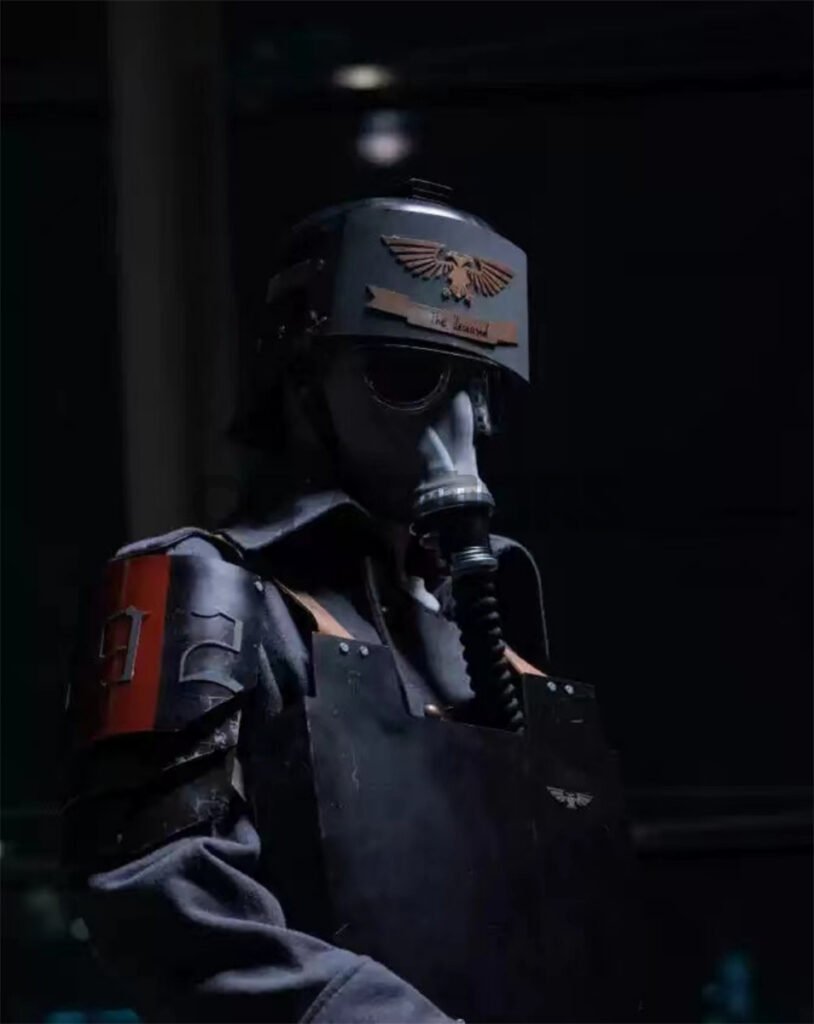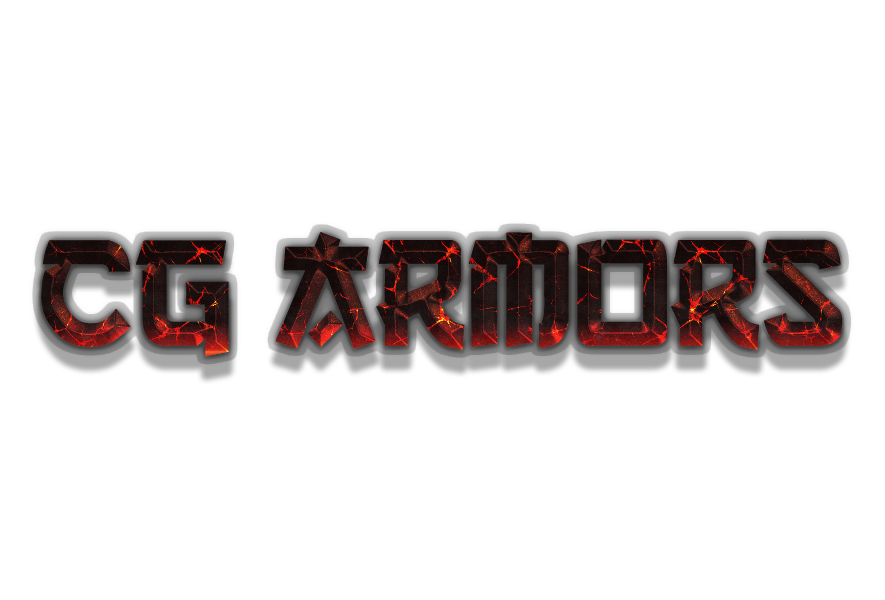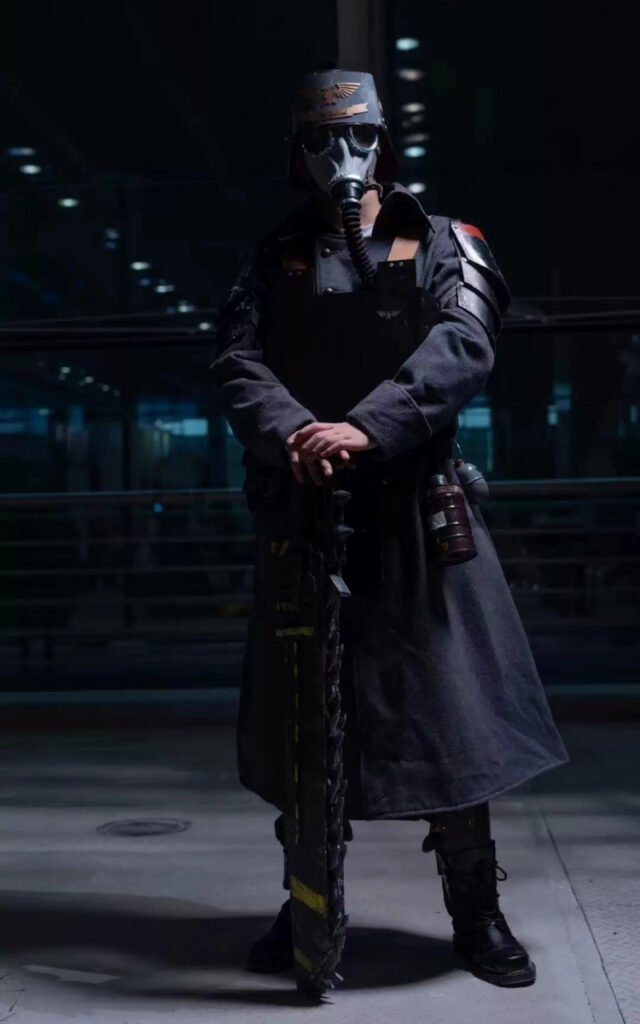For any cosplayer, a costume that fits well makes all the difference, bringing both comfort and confidence to your character portrayal. The accuracy of fit can completely transform your experience, making it easier to move, pose, and enjoy the event. When investing in a custom-sized cosplay costume, you’re taking an extra step toward achieving that dream fit, but it takes a bit of planning, measuring, and clear communication to make it just right.
This guide covers everything you need to know about getting a perfect fit for custom cosplay costumes, including tips for measuring accurately, working with your designer, and what to do if adjustments are needed.
Here’s how to achieve a comfortable, accurate fit with custom cosplay costumes.

Table of Contents
- Why Are Accurate Measurements So Important?
- How Should You Communicate Size and Fit Preferences?
- What Should You Do if Adjustments Are Needed?
- Can You Alter Custom Costumes After They Arrive?
Why Are Accurate Measurements So Important?
Accurate measurements are the foundation of a custom-fit costume
In custom cosplay, accuracy is everything. A well-measured costume captures the exact lines of your body, ensuring that every part of the costume—from shoulder straps to leg cuffs—fits perfectly. Without accurate measurements, even the best-designed costume may feel too loose, too tight, or out of proportion. Precise measurements make your costume feel like an extension of your character, allowing you to focus on enjoying the cosplay without worrying about wardrobe malfunctions or discomfort.
Without precise measurements, even custom costumes may not fit as expected
With custom costumes, designers rely on the measurements you provide. An inch off here or there can make a big difference in how the costume looks and feels. For example, a slightly tight shoulder measurement could restrict arm movement, while a loose waist could make the costume feel baggy or out of proportion. Precision helps eliminate these issues, ensuring the final product fits as it should.
Learn best practices for measuring yourself or working with a tailor
Getting your measurements right is key, and here are some best practices to make sure you nail it:
- Use a Soft Measuring Tape: A flexible tape is essential to measure contours accurately.
- Measure While Wearing the Right Undergarments: If you plan to wear shapewear or a specific outfit under your costume, take measurements with those items on for a true fit.
- Stand Naturally: Don’t pull in your stomach or lift your shoulders unnaturally; stand relaxed to capture your natural body lines.
- Double-Check Key Measurements: Always double-check measurements like chest, waist, hips, and inseam, as these affect the overall fit the most.
- Consider Professional Help: If you’re unsure, ask a friend or a tailor to help measure tricky spots like shoulders or back length.
Accurate measurements ensure your custom cosplay feels comfortable and showcases your character’s look as you envisioned it.
<a name=”communicate-fit-preferences”></a>
How Should You Communicate Size and Fit Preferences?
Clear communication helps designers understand your fit needs
Once you have your measurements, it’s important to share any specific fit preferences with your designer. While measurements tell designers your body’s dimensions, your fit preferences help them interpret how snug, loose, or flexible the costume should feel in different areas. Maybe you prefer a looser fit around the legs for easier movement, or you want the shoulders to feel snug for a more structured look. These details guide your designer in crafting a piece that’s comfortable and functional.
Describe preferences for comfort, snugness, and mobility
Comfort and mobility are essential to keep in mind for cosplay costumes, especially for events where you’ll be wearing the outfit all day. Describe how you want the costume to fit in different areas. For example, if you’re concerned about shoulder mobility or need extra room at the waist for sitting down, let your designer know. These preferences can affect their design choices, from material selection to the cut and shape of each costume part.
Tips for detailing fit needs, including specific areas like shoulders and waist
To make sure your designer understands your fit preferences, here’s how to share details clearly:
- Specify Areas That Need Room for Movement: For example, mention if you want flexible fabric in the knees or elbow areas for ease of movement.
- Communicate Preferences for Waist and Hip Fit: If you prefer a snug waist or a looser hip area, make it clear to avoid discomfort.
- Consider Adding Notes for Shoulders and Arms: Since shoulder and arm mobility is essential, clarify if you need extra room or if you’re okay with a more structured fit.
- Mention Any Other Special Fit Requirements: If you have any unique requests, like a custom neckline or fitted cuffs, communicate these early.
Clear, detailed communication with your designer helps ensure your custom costume fits your comfort and mobility needs.
<a name=”adjustments”></a>
What Should You Do if Adjustments Are Needed?
Adjustments are sometimes necessary, even for custom items
Even with accurate measurements and good communication, there may still be times when small adjustments are needed after you try on your custom costume. Minor adjustments can make a significant difference in comfort, and most designers are used to making post-delivery tweaks. Don’t hesitate to request adjustments if you feel they’re necessary for a better fit or easier movement.
Learn the process for requesting modifications post-delivery
Many designers include an adjustment policy as part of their service. Before placing your order, ask about this to understand what alterations are possible. Some adjustments may be straightforward, like taking in a waist or loosening a seam, while others might involve more work. Knowing what adjustments are possible can help you feel confident that your costume can be fine-tuned if needed.
Explore options for minor alterations versus more extensive modifications
Here are some examples of adjustments and how to request them:
- Simple Sizing Adjustments: If something feels too loose or tight, let your designer know. They may ask for updated measurements or photos to assess the fit and recommend changes.
- Length Adjustments: If the costume is too long or short in certain areas, ask if it can be hemmed or adjusted without altering the overall look.
- Customization for Comfort: Some adjustments may involve adding extra padding or straps to enhance comfort. If you feel uncomfortable in a specific area, discuss solutions with your designer.
- Accessory Adjustments: Belts, gloves, and other accessories can often be adjusted to fit better. If an accessory doesn’t feel right, ask about resizing options.
Adjustments help refine the fit of your costume, ensuring that it feels as comfortable and functional as it looks.
<a name=”alterations”></a>
Can You Alter Custom Costumes After They Arrive?
Alterations can adjust the fit of custom costumes as needed
Once your custom costume arrives, you might find a few small details that need adjusting to get that perfect fit. Alterations allow you to fine-tune specific parts of the costume so they match your body and comfort needs more closely. While it’s ideal for custom costumes to fit well upon arrival, even small tweaks can make a huge difference in the costume’s comfort and appearance.
Basic tailoring can address fit issues or add durability
Sometimes, basic tailoring can be a quick fix for issues like slightly loose seams, hems that need adjustment, or cuffs that don’t sit right. Tailoring doesn’t just improve fit; it can also enhance the costume’s durability, ensuring it holds up for multiple wears and events.
Discover which types of adjustments are common and easy to do at home
If you have basic sewing skills, some simple alterations may be manageable on your own:
- Adjusting Straps and Velcro: Some costumes use straps or Velcro that can easily be adjusted for a better fit around arms, waist, or chest.
- Shortening or Hemming: Basic hemming can adjust length in sleeves, pants, or skirts. It’s a simple adjustment that can be done at home with a needle and thread.
- Adding Elastic Bands for Flexibility: If parts of the costume feel too restrictive, consider adding elastic bands to increase comfort and movement range.
- Reinforcing Seams: Reinforcing seams with additional stitching can increase durability, especially in areas that receive a lot of movement, like knees and elbows.
With a few quick alterations, you can adjust the fit of your costume for the perfect look and feel.
Conclusion
Achieving the perfect fit with a custom cosplay costume requires a few key steps—starting with accurate measurements, communicating your fit preferences, being open to post-delivery adjustments, and making any necessary alterations once you receive it. Each step helps ensure that the costume looks and feels like an extension of your character, allowing you to fully embody your role with confidence. A well-fitted costume not only enhances your appearance but also makes the entire cosplay experience more enjoyable.
By following these tips, you’ll be able to work effectively with your designer, achieve a comfortable, well-fitted costume, and ensure that you’re ready to make an impact at your next event.
External Links Recommendation
Let’s make it happen
Your perfect cosplay costume is waiting to be created—are you ready to bring your vision to life with a flawless fit? With our expertise in custom sizing and dedication to quality, we make sure every inch of your costume is tailored to your comfort and character. Don’t settle for anything less than perfect! Contact us today to get started on a custom cosplay costume that fits you like a dream, so you can step into character with confidence and style. Let’s make it happen! Email your dreaming character pictures to cgarmors@gmail.com



One Response
Your ability to connect with the reader on both an intellectual and emotional level is truly rare.